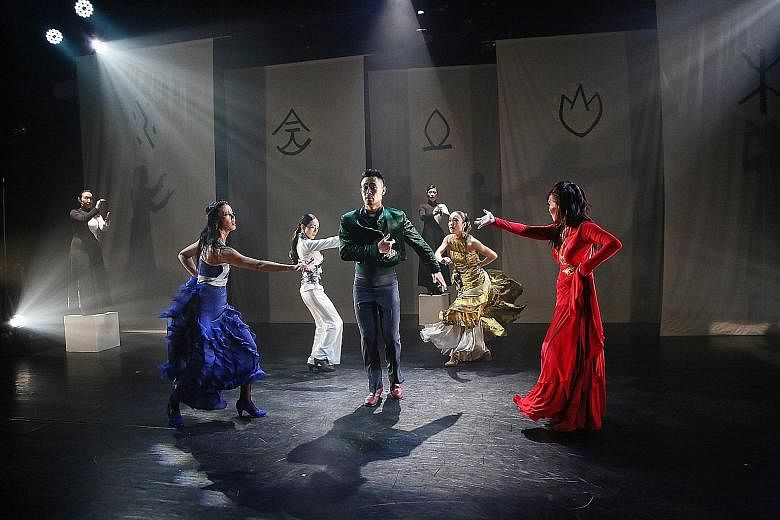REVIEW / DANCE
THE ELEMENTS
Flamenco Sin Fronteras
Last Saturday
Goodman Arts Centre
The Elements exploded the conventions of traditional flamenco dance through innovative choreography, exceptional artistry and a bold interdisciplinary approach.
Thematically, the marriage of flamenco with Chinese Tao philosophy is a challenging concept.
Chaos and harmony, confusion and serenity meld in an evolving cycle of life that humanises and balances the world with the five elements of fire, water, earth, metal and wood symbolising a continuum.
Artistic director and choreographer Antonio Vargas criss-crossed East/West underpinnings that served as an allegory for the group itself.
All performers are Asian and their deep-felt connection to the Spanish dance form sustained their performances, while the content metaphorically connected their personal, geographical and spiritual contexts.
Musical direction and composition by Yong Kailin synergised the eclectic group of regional and Spanish musicians reiterating the complexity of the Spanish/Chinese binary through fusing traditional flamenco guitar, voice and percussion with the guzheng and bamboo flute.
Yong also opened and closed the show reciting a Chinese poem expounding the subtext ideologies of change, interconnection, expansion and contraction, circling and entwining.
The pounding rhythm of the feet, supported by the relentless palmas (hand-clapping), underscored the choreography.
Creativity in extending the flamenco-movement vocabulary and expressive possibilities are seen in the circular motion of the body, fluid use of the arms with fluttering fingers, some partner counter-balancing and grounded movement phrases extended to the floor.
Daphne Huang Vargas impressively dons Chinese water sleeves in an interpretation of water to enhance the flow achieved through rippling, lateral movements combined with the foot rhythms of the flamenco.
Mamiko Kashiwa bared her soul as earth pounding the ground with hands and feet, twisting and wrenching herself through the space before being extinguished by the razor straight lines of metal danced by Yuriko Kurose.
Inevitably, the flamenco high- octane energy connected with some of the elements more than others.
Fire, danced by Tilly Wong, succinctly supported concept and form with exhilarating footwork and seductive manipulation of the traditional Spanish shawl, while Toshi Konno as Wood was a versatile and voyeuristic presence who oversaw the transitions in the cycle from one element to the next.
Chinese dance props such as fans, dance ribbons, metal swords and bamboo poles were wielded by three dancers in their roles as "energisers" who introduced and closed each episode.
This structure became predictable and the dances did not explore, in depth, the Chinese forms associated with the props.
The cyclical concept of The Elements converged in the final stages of the choreography through a meditative circle of life.
This absorbing production found confluence between the disparate elements of flamenco and Chinese philosophy through innovative development of the aesthetics and deep investigation of the concept through music and dance.

